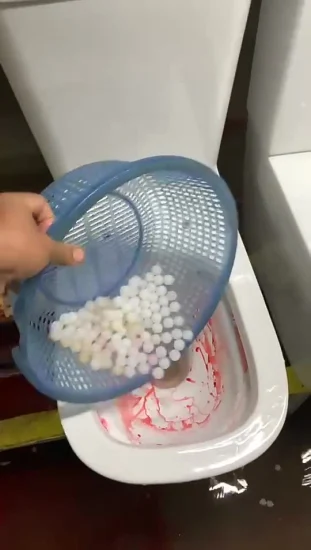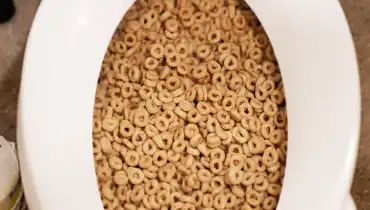Is it Possible to Dispose of Food in the Toilet?
Is it Possible to Dispose of Food in the Toilet?
Blog Article
Just how do you feel with regards to Flushing Food Down the Toilet??

Introduction
Lots of people are frequently faced with the issue of what to do with food waste, particularly when it comes to leftovers or scraps. One usual concern that emerges is whether it's all right to flush food down the commode. In this write-up, we'll explore the reasons why individuals may consider flushing food, the consequences of doing so, and different techniques for correct disposal.
Reasons people could consider purging food
Absence of understanding
Some individuals may not know the prospective damage brought on by purging food down the bathroom. They may erroneously think that it's a safe technique.
Comfort
Purging food down the commode might look like a fast and easy option to disposing of unwanted scraps, especially when there's no neighboring trash can offered.
Idleness
In some cases, people might just choose to flush food out of sheer laziness, without considering the repercussions of their actions.
Repercussions of flushing food down the commode
Environmental influence
Food waste that winds up in rivers can add to air pollution and injury aquatic ecological communities. Additionally, the water made use of to purge food can stress water sources.
Plumbing issues
Purging food can cause clogged pipes and drains, causing pricey pipes repairs and hassles.
Kinds of food that ought to not be purged
Fibrous foods
Foods with fibrous textures such as celery or corn husks can obtain tangled in pipelines and trigger clogs.
Starchy foods
Starchy foods like pasta and rice can take in water and swell, causing blockages in pipes.
Oils and fats
Greasy foods like bacon or food preparation oils need to never ever be flushed down the bathroom as they can strengthen and cause obstructions.
Correct disposal methods for food waste
Utilizing a waste disposal unit
For homes outfitted with garbage disposals, food scraps can be ground up and flushed through the plumbing system. However, not all foods appropriate for disposal in this way.
Recycling
Specific food product packaging products can be reused, minimizing waste and minimizing environmental influence.
Composting
Composting is an eco-friendly method to take care of food waste. Organic products can be composted and made use of to enhance soil for horticulture.
The value of proper waste monitoring
Lowering environmental injury
Appropriate waste management techniques, such as composting and recycling, aid lessen pollution and protect natural deposits for future generations.
Safeguarding pipes systems
By staying clear of the practice of flushing food down the bathroom, homeowners can stop expensive plumbing repair services and keep the stability of their plumbing systems.
Conclusion
To conclude, while it might be appealing to flush food down the toilet for benefit, it is necessary to understand the potential effects of this activity. By taking on correct waste monitoring practices and getting rid of food waste properly, people can contribute to much healthier pipes systems and a cleaner setting for all.
FLUSH FOOD DOWN THE TOILET?
FLUSHING FOOD CAN CAUSE BLOCKED DRAINS IN YOUR HOME
All of the plumbing fixtures in your home are connected to the same sewer pipe outside of your home. This outdoor sewer pipe is responsible for transporting all the wastewater from your home to the Council sewer mains. Even small pieces of food that go down the kitchen sink can cause problems for your sewer. It should therefore be obvious that flushing larger bits of food, such as meat, risks a clog in either the toilet itself or the sewer pipes. Flushing greasy food is even more problematic because oil coagulates when it cools, coating the interior lining of your pipes.
THE TOILET IS NOT A BIN
Food isn’t the only thing that people shouldn’t be flushing down the toilet. People use the toilet to dispose of all kinds of things such as tampons, makeup wipes, dental floss, kitty litter and even underwear. Water goes to great lengths to educate residents about the high costs and stress placed on wastewater treatment systems simply from people flushing the wrong stuff down the toilet. It costs taxpayers millions of dollars each year, and homeowners thousands in blocked drain repairs.
FLUSHING FOOD IS A WASTE OF WATER
Flushing food is a waste of our most precious resource - water. In June this year Level 1 water restrictions were introduced to protect water supply from drought conditions. Much of New South Wales continues to be affected by prolonged drought with recent figures revealing up to 97 per cent of the state remains in drought. Depending on whether you have a single or dual flush toilet, every single flush uses between five and 11 litres of water. In the current climate this is a huge amount of water to be wasting on flushing food that should be placed in the bin (or better yet, the compost).
https://www.jabplumbingsolutions.com.au/blog/can-you-flush-food-down-the-toilet

As a serious reader about Think Twice Before Flushing Food Down Your Toilet, I think sharing that chunk was sensible. Don't hesitate to pause to share this blog entry if you liked it. We enjoy reading our article about What Can Happen If You Flush Food Down the Toilet?.
Call Today Report this page